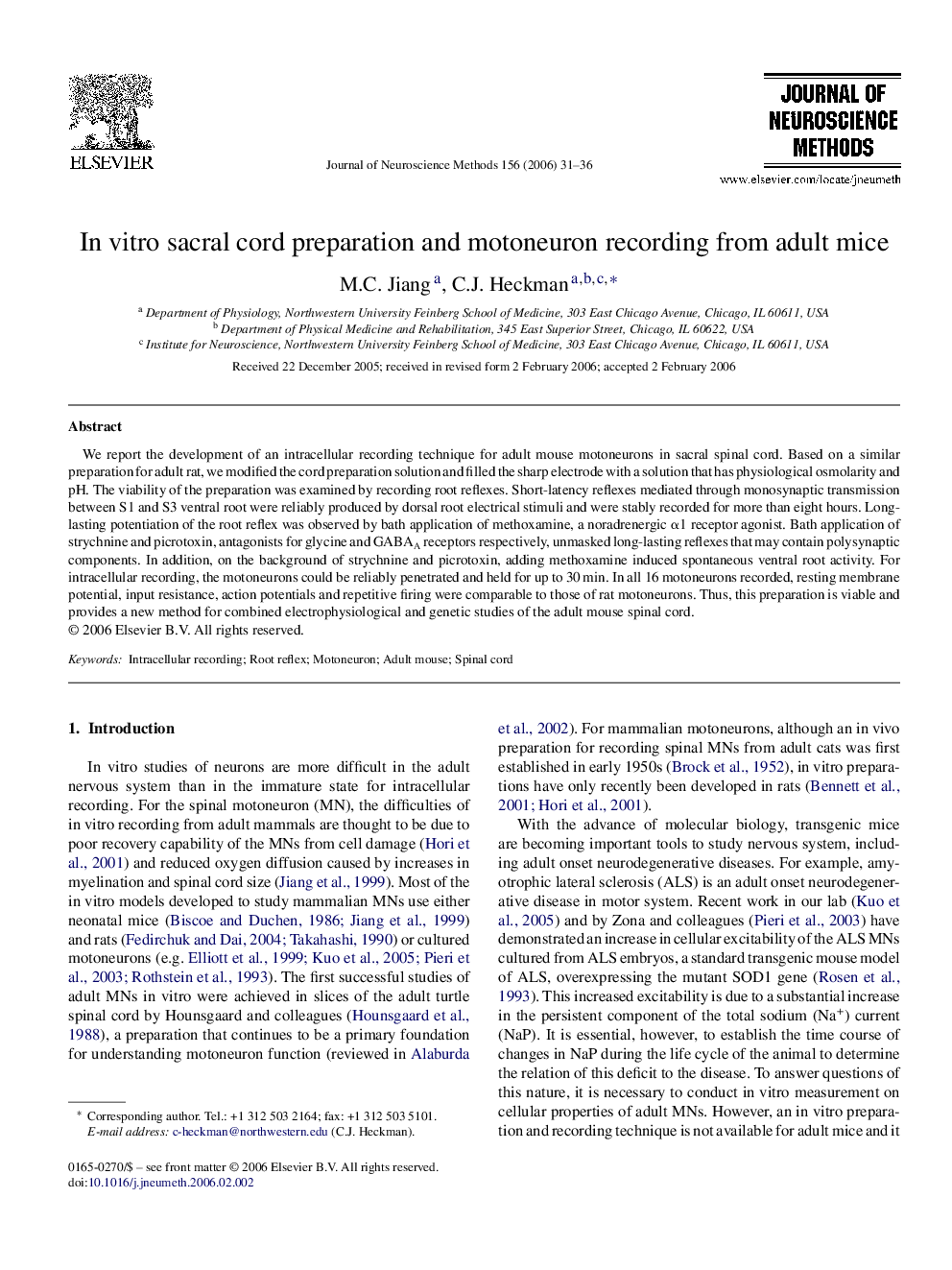| Article ID | Journal | Published Year | Pages | File Type |
|---|---|---|---|---|
| 4337097 | Journal of Neuroscience Methods | 2006 | 6 Pages |
Abstract
We report the development of an intracellular recording technique for adult mouse motoneurons in sacral spinal cord. Based on a similar preparation for adult rat, we modified the cord preparation solution and filled the sharp electrode with a solution that has physiological osmolarity and pH. The viability of the preparation was examined by recording root reflexes. Short-latency reflexes mediated through monosynaptic transmission between S1 and S3 ventral root were reliably produced by dorsal root electrical stimuli and were stably recorded for more than eight hours. Long-lasting potentiation of the root reflex was observed by bath application of methoxamine, a noradrenergic α1 receptor agonist. Bath application of strychnine and picrotoxin, antagonists for glycine and GABAA receptors respectively, unmasked long-lasting reflexes that may contain polysynaptic components. In addition, on the background of strychnine and picrotoxin, adding methoxamine induced spontaneous ventral root activity. For intracellular recording, the motoneurons could be reliably penetrated and held for up to 30 min. In all 16 motoneurons recorded, resting membrane potential, input resistance, action potentials and repetitive firing were comparable to those of rat motoneurons. Thus, this preparation is viable and provides a new method for combined electrophysiological and genetic studies of the adult mouse spinal cord.
Related Topics
Life Sciences
Neuroscience
Neuroscience (General)
Authors
M.C. Jiang, C.J. Heckman,
